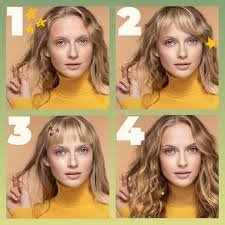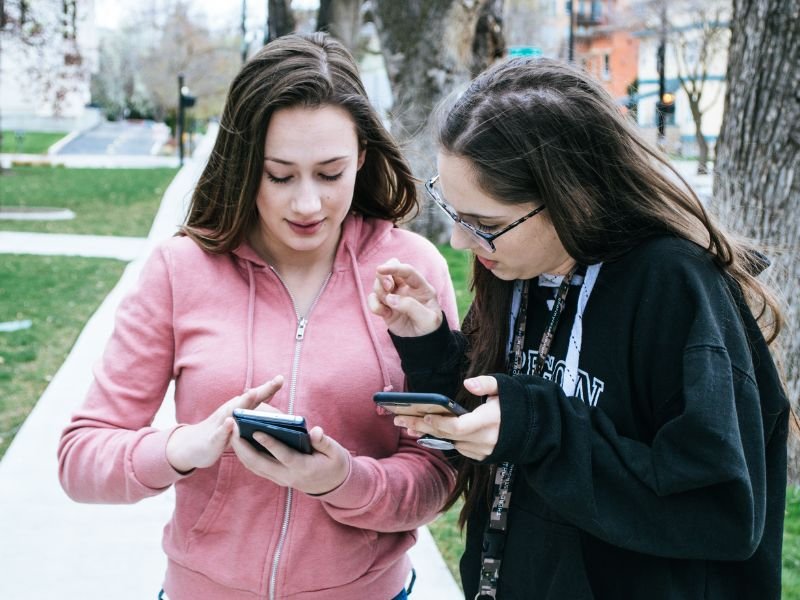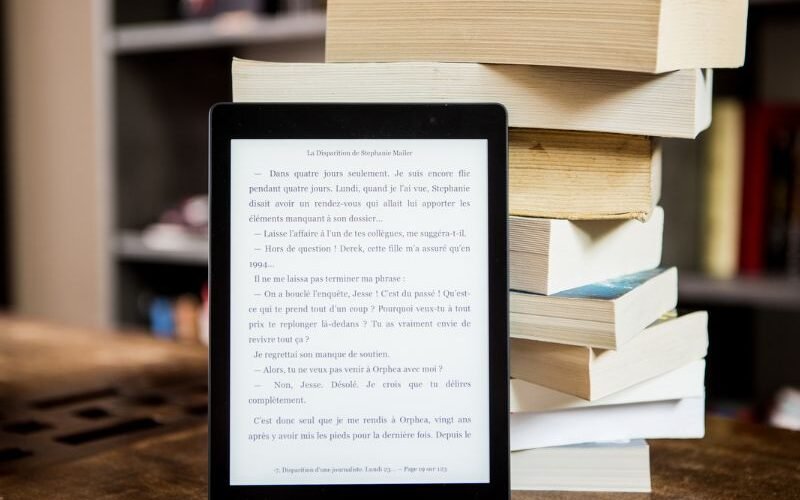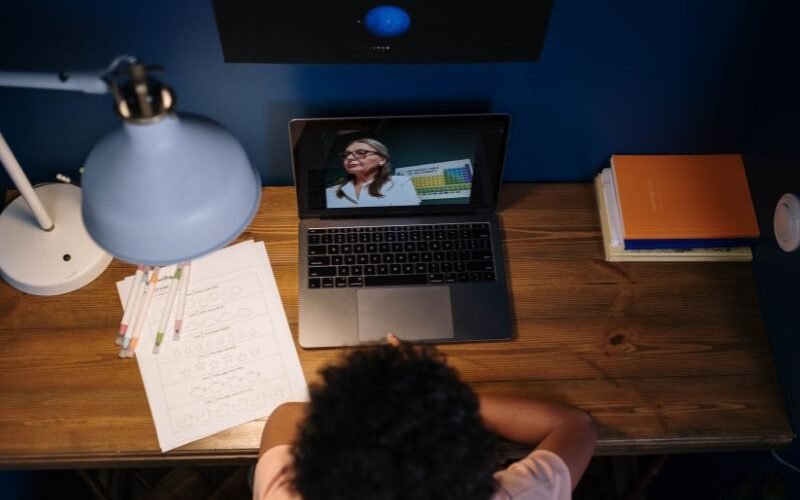The world of hairstyling has undergone a dramatic transformation with the advent of artificial intelligence (AI). Gone are the days when people had to rely solely on hairstylists’ recommendations or guesswork to choose a new look. Today, AI-powered hairstyle apps are revolutionizing the beauty industry by offering personalized, realistic, and instant hairstyle simulations. These apps leverage advanced machine learning algorithms, augmented reality (AR), and facial recognition technology to help users experiment with different cuts, colors, and styles before making a commitment.
The rise of AI in hairstyling reflects a broader trend of technology infiltrating everyday beauty routines. From virtual try-ons to AI-driven hair diagnostics, these apps are not just about convenience—they empower users to make informed decisions. Whether someone is considering a bold pixie cut, vibrant balayage, or simply exploring how they would look with bangs, AI hairstyle apps provide a risk-free way to visualize changes. This innovation is particularly valuable in an era where personalization and digital experiences dominate consumer expectations.
Moreover, AI hairstyle apps cater to a diverse audience, including salon professionals, beauty enthusiasts, and individuals undergoing hair loss treatments. By analyzing facial structure, skin tone, and hair texture, these apps offer tailored suggestions that enhance user confidence. As AI continues to evolve, the capabilities of these apps will only expand, further blurring the line between virtual experimentation and real-world results. This article explores the features, benefits, and future potential of AI-powered hairstyle applications.
How AI Hairstyle Apps Work
AI hairstyle apps utilize a combination of technologies to deliver accurate and realistic hair simulations. At the core of these applications is facial recognition software, which maps key features such as face shape, jawline, and hairline to ensure the virtual hairstyle aligns perfectly with the user’s appearance. Machine learning algorithms then analyze this data to recommend styles that complement the individual’s facial structure. Some apps even consider factors like age, gender, and current hair trends to refine their suggestions.
Augmented reality (AR) plays a crucial role in enhancing the user experience. By overlaying digital hairstyles onto live camera feeds or uploaded photos, AR allows users to see how a particular cut or color would look from different angles. Advanced apps incorporate realistic physics, simulating how hair moves and falls naturally. This level of detail helps users make more confident decisions, reducing the anxiety often associated with drastic hair changes.
Additionally, some AI hairstyle apps integrate hair health diagnostics. Using image analysis, these tools assess hair condition, detecting issues like split ends, thinning, or damage. They may then recommend treatments or products to improve hair health. This holistic approach makes AI hairstyle apps more than just virtual mirrors—they serve as comprehensive hair care assistants.
Key Features of AI Hairstyle Apps
One of the standout features of AI hairstyle apps is their extensive virtual try-on functionality. Users can experiment with hundreds of styles, from classic bobs to futuristic undercuts, without ever visiting a salon. Many apps also allow color adjustments, enabling users to test out shades ranging from natural blacks and browns to bold blues and pinks. This feature is particularly useful for those considering drastic color changes, as it helps avoid costly and disappointing outcomes.
Another notable feature is personalized style recommendations. By analyzing user preferences and past selections, AI algorithms curate a list of suitable hairstyles. Some apps even factor in lifestyle and maintenance preferences, suggesting low-maintenance cuts for busy individuals or trendy styles for fashion-forward users. This level of customization ensures that recommendations are not just aesthetically pleasing but also practical.
Social sharing capabilities further enhance the appeal of these apps. Users can save their favorite looks, compare different styles side by side, and share them on social media for feedback. This interactive element fosters a sense of community, allowing friends and followers to weigh in on potential hair transformations. Some apps even connect users with local stylists who can bring their chosen looks to life.
The growing popularity of AI-powered hairstyle simulations has led to the development of several innovative apps that allow users to experiment with different looks before committing to a change. Below are some of the best AI hairstyle apps available today, each offering unique features to help users visualize and choose their perfect hairstyle.
1. YouCam Makeup (Perfect Corp.)

One of the most popular AI-powered beauty apps, YouCam Makeup, includes a robust hairstyle try-on feature. Users can test various haircuts, colors, and even hair extensions in real time using augmented reality. The app also offers makeup and skin analysis, making it a comprehensive beauty tool.
Key Features:
- Real-time AR hairstyle simulation
- Wide selection of colors and cuts
- Makeup and beauty filters
- Skin diagnostics
2. Style My Hair (L’Oréal Paris)
Developed by L’Oréal Paris, Style My Hair is a professional-grade virtual hairstyling app that uses AI to recommend looks based on facial structure, skin tone, and current trends. Users can try on L’Oréal’s signature hair colors and styles, making it a great tool for those considering salon treatments.
Key Features:
- AI-powered personalized recommendations
- Try-on L’Oréal hair colors
- Salon locator for professional services
- Trendy hairstyle filters
3. Hair Color Booth
A simple yet effective app, Hair Color Booth allows users to upload a photo and test different hair colors with realistic blending. While it doesn’t offer full haircut simulations, it’s perfect for those experimenting with shades before a dye job.
Key Features:
- Easy-to-use color changer
- Natural-looking color blending
- Save and compare different looks
4. FaceApp (Hairstyle Filters)

While primarily known for its aging and gender-swapping filters, FaceApp also includes AI-powered hairstyle changes. Users can see themselves with different lengths, textures, and colors, though the options are more limited compared to dedicated hairstyle apps.
Key Features:
- AI-generated hairstyle transformations
- Additional beauty and face-editing tools
- Realistic rendering
5. ModiFace (Now part of L’Oréal)
ModiFace was one of the first AI-powered virtual try-on apps for hair and makeup before being acquired by L’Oréal. Its technology is now integrated into many salon and beauty brand apps, offering hyper-realistic hair simulations.
Key Features:
- Ultra-realistic AR hair try-on
- Used by professional salons
- Advanced lighting and texture rendering
Availability: 🔗 Website (Integrated into L’Oréal apps)
6. Hair Zapp (by Schwarzkopf)
Developed by Schwarzkopf, Hair Zapp is a salon-grade virtual hairstyling tool that lets users test different cuts and colors. It also provides product recommendations based on the selected style.
Key Features:
- Professional-grade hairstyle simulations
- Schwarzkopf color matching
- Product suggestions for maintenance
Benefits of Using AI Hairstyle Apps
The primary benefit of AI hairstyle apps is their ability to eliminate guesswork. Choosing a new hairstyle can be daunting, especially when the outcome is uncertain. With virtual try-ons, users can preview changes in real time, reducing the risk of post-salon regret. This feature is particularly valuable for individuals undergoing significant transformations, such as cutting long hair short or trying an unconventional color.
Another advantage is the time and cost savings these apps offer. Instead of spending hours in a salon chair only to end up dissatisfied, users can experiment freely at home. This not only saves money on potentially unwanted treatments but also allows for more informed consultations with stylists. By arriving at appointments with a clear vision, users can communicate their desires more effectively, leading to better results.
AI hairstyle apps also promote inclusivity. Many apps offer a wide range of textures and styles tailored to different ethnicities and hair types. Whether someone has curly, coily, straight, or wavy hair, these apps ensure that all users can find representations that resonate with them. This inclusivity is a significant step forward in an industry that has historically favored certain hair types over others.
The Future of AI in Hairstyling
As AI technology continues to advance, the capabilities of hairstyle apps will expand even further. Future iterations may incorporate 3D modeling and holographic projections, allowing users to see themselves in a fully immersive virtual environment. AI could also integrate with smart mirrors in salons, enabling stylists to showcase potential looks in real time during consultations.
Another exciting possibility is the integration of AI with wearable devices. Imagine smart brushes or combs that analyze hair health in real time and sync with hairstyle apps to provide instant recommendations. Additionally, AI could collaborate with hair care brands to suggest personalized products based on users’ hair types and concerns, creating a seamless beauty ecosystem.
The potential for AI to revolutionize hair restoration is also noteworthy. For individuals experiencing hair loss, AI-powered apps could simulate hair growth treatments or transplant results, offering hope and clarity. Combined with advancements in regenerative medicine, AI may one day assist in creating fully personalized hair restoration plans.
AI Hairstyle Apps and Salon Collaboration
One of the most exciting developments in AI hairstyle apps is their growing integration with professional salons. Many beauty businesses are now adopting these tools to enhance customer consultations. Instead of relying solely on verbal descriptions or static images, stylists can use AI-powered apps to show clients realistic previews of their desired looks. This not only improves communication but also builds trust, as clients can see exactly how a cut or color will appear before any scissors touch their hair.
Salons are also leveraging AI apps to streamline their operations. Some platforms allow users to upload selfies, try different styles, and then book appointments directly with salons that specialize in those looks. This creates a seamless transition from virtual experimentation to real-world execution. Additionally, AI can assist stylists by analyzing hair texture and condition, recommending the best techniques and products for each client. This level of precision elevates the salon experience, ensuring better outcomes and higher customer satisfaction.
Beyond individual salons, AI hairstyle apps are influencing broader beauty trends. By aggregating data on popular styles and user preferences, these apps can identify emerging trends in real time. This information is invaluable for salon owners, product developers, and influencers looking to stay ahead of the curve. As AI continues to refine its predictive capabilities, it may even anticipate future trends before they go mainstream, reshaping the entire beauty landscape.
Ethical Considerations and Challenges
While AI hairstyle apps offer numerous benefits, they also raise important ethical questions. One concern is data privacy, as these apps often require access to personal photos and facial recognition data. Users must trust that their information is being stored securely and not exploited for unauthorized purposes. Developers must prioritize transparency, clearly outlining how data is used and providing robust security measures to protect user privacy.
Another challenge is ensuring algorithmic fairness. AI systems are only as unbiased as the data they’re trained on, and if that data lacks diversity, the app may not serve all users equally. For example, an app trained predominantly on straight hair might struggle to accurately simulate curly or coily textures. Developers must actively work to include diverse datasets, ensuring their apps cater to all hair types and ethnicities. This inclusivity is not just a technical necessity but also a moral imperative in an increasingly globalized beauty market.
There’s also the risk of over-reliance on AI, which could diminish the role of human stylists. While AI can suggest styles and predict outcomes, it lacks the creative intuition and emotional intelligence of a skilled professional. The best results will likely come from a collaborative approach, where AI aids stylists rather than replaces them. Balancing technology with human expertise will be key to the sustainable growth of this industry.
User Experiences and Testimonials
The real-world impact of AI hairstyle apps is best understood through the stories of their users. Many people report feeling more confident and adventurous with their hair choices after using these tools. For instance, someone who’s always wanted to try platinum blonde can test the look virtually first, avoiding a potentially disastrous real-life experiment. Others use the apps to prepare for major life events, like weddings or job interviews, ensuring their hair perfectly complements the occasion.
Hair loss patients have also found solace in these applications. Individuals undergoing chemotherapy or dealing with alopecia can use AI to visualize how they’d look with different wigs or hairpieces, helping them regain a sense of control over their appearance. Similarly, people considering hair transplants can simulate post-procedure results, setting realistic expectations before undergoing costly and invasive treatments.
Salon professionals, too, praise these apps for enhancing client relationships. Stylists note that clients who’ve used AI previews arrive with clearer expectations, leading to more productive consultations and happier outcomes. Some stylists even use the apps as educational tools, showing clients why certain styles may or may not work for their face shape or hair type. This collaborative approach fosters a deeper understanding between stylists and their clients.
The Role of AI in Hair Care Education
Beyond styling, AI apps are becoming valuable resources for hair care education. Many platforms now include tutorials and tips tailored to the user’s specific hair type and concerns. For example, someone with color-treated hair might receive customized advice on maintaining vibrancy and preventing damage. These educational features empower users to take better care of their hair between salon visits.
Some apps take this further by offering diagnostic capabilities. Using smartphone cameras, they can analyze hair and scalp health, identifying issues like dryness, breakage, or dandruff. They then recommend targeted treatments or products, effectively serving as at-home hair consultants. This proactive approach to hair care can prevent minor issues from becoming major problems, saving users time and money in the long run.
The educational potential extends to aspiring stylists as well. Beauty schools are beginning to incorporate AI apps into their curricula, allowing students to practice virtual styling before working with real clients. This not only builds technical skills but also helps students develop their artistic eye, experimenting with colors and cuts they might not encounter in a traditional classroom setting.
Technological Innovations on the Horizon
The next generation of AI hairstyle apps promises even more immersive experiences. Developers are working on incorporating haptic feedback, where users could “feel” different hair textures through their devices. Imagine running your fingers over virtual curls or sleek straight hair through your smartphone screen. This tactile dimension would bring virtual try-ons even closer to reality.
Another emerging trend is the integration of AI with social media platforms. Future apps might allow users to see how they’d look with hairstyles inspired by their favorite celebrities or influencers, with AI instantly recreating those looks on their own image. Some platforms are even exploring live AR filters that let users “wear” different hairstyles during video calls or social media broadcasts.
Perhaps most revolutionary is the potential for AI to assist in custom hair product formulation. By analyzing a user’s hair characteristics and desired outcomes, AI could recommend or even create personalized shampoos, conditioners, and treatments. This would mark a significant step toward truly bespoke hair care, where every product is tailored to an individual’s unique needs.
Conclusion
AI hairstyle apps represent a groundbreaking fusion of technology and beauty, offering users unprecedented control over their hair transformations. By leveraging facial recognition, augmented reality, and machine learning, these apps provide realistic, personalized, and risk-free ways to experiment with new looks. They empower individuals to make confident decisions, save time and money, and explore styles that align with their unique features and preferences. As the technology evolves, the possibilities for innovation in virtual hairstyling are limitless.
The impact of AI on the beauty industry extends beyond convenience—it fosters inclusivity, enhances self-expression, and bridges the gap between imagination and reality. Whether for everyday users, salon professionals, or individuals dealing with hair loss, AI hairstyle apps are democratizing access to personalized beauty solutions. The ability to visualize and refine hairstyles before committing to them marks a significant shift in how people approach hair care and styling.
Looking ahead, AI will continue to push boundaries, introducing features that further blur the lines between the digital and physical worlds. From smart salon integrations to advanced hair diagnostics, the future of AI in hairstyling is bright. As these tools become more sophisticated and accessible, they will undoubtedly redefine standards in beauty, making personalized, data-driven hairstyling the new norm. The journey of AI in hairstyling has only just begun, and its potential to transform the industry is immense.






